Knee Procedures
Surgical Knee Treatments
- Knee Arthroscopy

Knee arthroscopy is a common surgical procedure performed using an arthroscope, a viewing instrument, to diagnose or treat a knee problem. It is a relatively safe procedure and you will usually be discharged from the hospital on the same day of surgery.
Know More Launch Movie - Arthroscopic Debridement
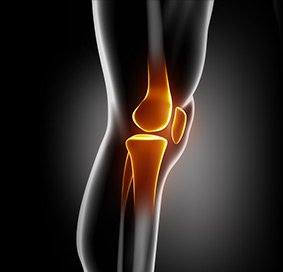
Arthroscopic debridement or a clean-up is a surgical procedure performed using an arthroscope. In this procedure, the cartilage or the bone that is damaged is removed using surgical instruments and the edges of the articular cartilage that are rough will be smoothened.
Know More - Knee Fracture Surgery

A knee fracture is a broken bone or a crack in or around the joint of the knee. This can involve the tibia (shin bone), the kneecap (patella), or femur (thighbone) where they connect with the knee.
Know More - Periprosthetic Knee Fracture Fixation

Periprosthetic knee fracture fixation is a procedure performed to stabilize a fracture that occurs in the bone present around a knee prosthesis. The fracture may involve the lower part of the thighbone (femur), the kneecap (patella) or the upper part of the shinbone (tibia).
Know More - ORIF of the Knee Fracture

ORIF refers to open reduction and internal fixation. It is a surgical procedure employed for the treatment of a fracture not amenable to non-surgical conservative treatment.
Know More - Meniscectomy

Meniscectomy is a surgical procedure indicated in individuals with torn meniscus where the conservative treatments are a failure to relieve the pain and other symptoms.
Know More - Meniscal Surgery
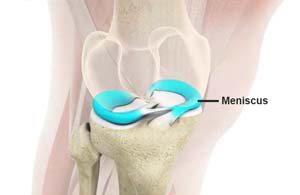
Meniscal surgery is recommended for the repair of meniscal tears. Knee arthroscopy is the commonly recommended surgical procedure for meniscal tears. The surgical treatment options include meniscus removal (meniscectomy), meniscus repair and meniscus replacement.
Know More - Saucerization

Saucerization is a surgical procedure performed to treat a discoid (disc-shaped) meniscus in the knee joint which is more prone to injury.
Know More - Subchondroplasty
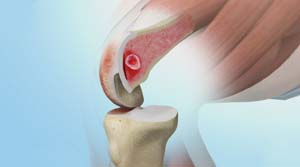
Knee osteoarthritis (OA) is a common form of arthritis that causes joint pain and stiffness. It is a progressive disease in which the joint cartilage gradually wears away, leading to disability.
Know More - Patellar Tendon Repair

Patella tendon rupture is the rupture of the tendon that connects the patella (kneecap) to the top portion of the tibia (shinbone). The patellar tendon works together with the quadriceps muscle and the quadriceps tendon to allow your knee to straighten out.
Know More - Distal Realignment Procedures
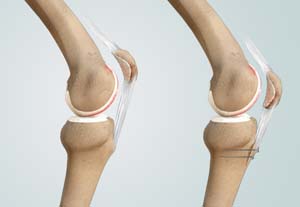
Distal realignment procedures, also known as tibial tubercle transfer (TTT) procedures, are performed to reposition the kneecap after subluxation or dislocation by realigning the tendon under the kneecap to the underlying tibial tubercle.
Know More - Cartilage Replacement
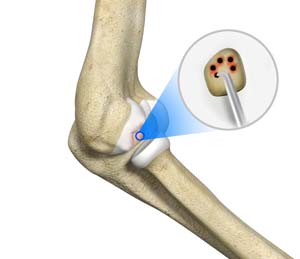
Cartilage replacement is a surgical procedure performed to replace the worn-out cartilage with new cartilage.
Know More - Arthroscopic Reconstruction of the Knee for Ligament Injuries
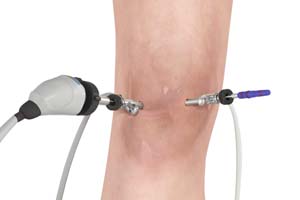
Arthroscopic reconstruction of the knee ligament is a minimally invasive surgery performed through a few tiny incisions. An arthroscope is inserted into the knee joint through one of the small incisions to provide clear images of the surgical area (inside the knee) to your surgeon on a television monitor.
Know More - ACL Reconstruction

The anterior cruciate ligament (ACL) is one of the major stabilizing ligaments in the knee.
Know More - MCL Reconstruction

Medial collateral ligament reconstruction is indicated for chronic MCL instability despite appropriate non-surgical treatment. The procedure is performed under general anesthesia. Arthroscopic examination of the knee may be performed to rule out any associated injuries including anterior cruciate ligament (ACL) and posterior cruciate ligament (PCL) tears.
Know More - Medial Patellofemoral Ligament Reconstruction
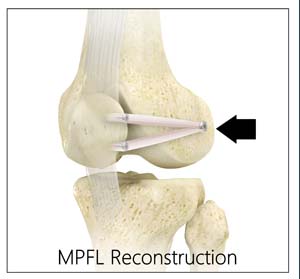
The medial patellofemoral ligament is a band of tissue that extends from the femoral medial epicondyle to the superior aspect of the patella. It is a major ligament that stabilizes the patella and helps in preventing patellar subluxation (partial dislocation) or dislocation.
Know More - Knee Implants

Knee implants are artificial devices that form the essential parts of the knee during a knee replacement surgery.
Know More - Total Knee Replacement

Total knee replacement, also called total knee arthroplasty, is a surgical procedure in which the worn out or damaged surfaces of the knee joint is removed and replaced with an artificial prosthesis.
Know More Launch Movie - Outpatient Total Knee Replacement

Total knee replacement is the surgical treatment for knee arthritis, where the damaged knee is removed and replaced with an artificial knee implant.
Know More - Unicompartmental/Partial Knee Replacement
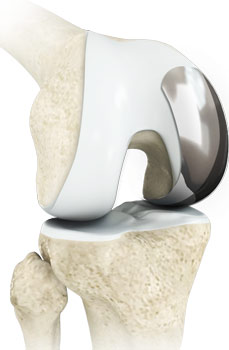
Arthritis is the inflammation of a joint that causes pain, swelling (inflammation) and stiffness.
Know More - Patellofemoral Knee Replacement
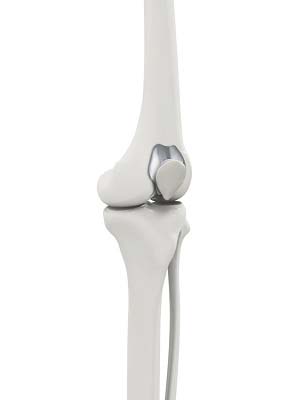
The knee can be divided into three compartments: patellofemoral, the compartment in front of the knee between the kneecap and thighbone, the medial compartment, on the inside portion of the knee, and lateral compartment which is the area on the outside portion of the knee joint.
Know More - Computer Navigation for Total Knee Replacement
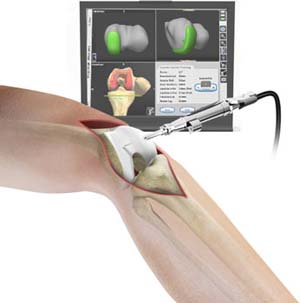
A total knee replacement surgery involves replacing the damaged surfaces of the articulating bones with artificial implants.
Know More - Painful or Failed Total Knee Replacement

Total knee replacement is a surgery employed to resurface knee joints damaged by arthritis, degeneration, or injury and replacing the damaged joints with a prosthesis (an artificial knee joint).
Know More - Correction of a Failed Knee Replacement

Knee replacement is a surgery employed to resurface a knee joint damaged by arthritis, wear and tear, or injury and replacing the damaged joint with a prosthesis (an artificial knee joint) to resolve a painful knee condition and loss of motion.
Know More - Knee Replacement with OrthAlign Technology

OrthAlign® uses a technology that simplifies and enhances the precision in implant alignment, significantly improving procedure outcomes.
Know More - Unicondylar Knee Replacement
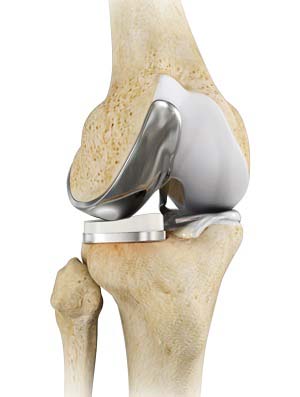
Unicompartmental knee replacement is a minimally invasive surgery in which only the damaged compartment of the knee is replaced with an implant.
Know More - Outpatient Unicondylar Knee Replacement

Outpatient joint replacement is a surgery that does not require an overnight hospital stay.
Know More - Partial Medial Knee Replacement

Partial medial knee replacement is a surgery to replace only the medial part of your damaged knee.
Know More - Custom Knee Replacement

Custom Knee Replacement is an advanced surgical procedure in which the damaged knee joint is replaced by a customized implant, specifically designed to match the unique size and shape of each patient’s knee.
Know More - Revision Knee Replacement

Revision knee replacement surgery involves replacing a part or all your previous knee prosthesis with a new prosthesis. Although total knee replacement surgery is successful, sometimes the procedure can fail due to various reasons and may require a second revision surgery.
Know More Launch Movie - Tricompartmental Knee Replacement
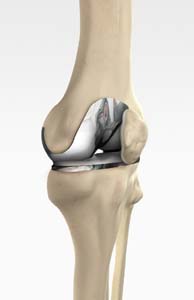
Tricompartmental knee replacement, also called total knee arthroplasty, is a surgical procedure in which the worn-out or damaged surfaces of the knee joint are removed and replaced with artificial parts.
Know More - Failed Anterior Cruciate Ligament (ACL) Reconstruction

The TLS short graft ACL reconstruction is an advanced surgical technique performed to repair a torn ACL ligament in the knee. It involves the use of a tape locking screw (TLS) system that enhances the strength and mobility of the reconstructed ACL tendon, allowing the return to sports or an active lifestyle.
Know More - ACL Reconstruction Procedure of Hamstring Tendon
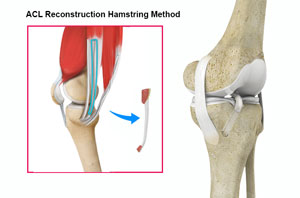
The anterior cruciate ligament (ACL) is one of the major stabilizing ligaments in the knee. It is a strong rope-like structure located in the center of the knee running from the femur to the tibia. When this ligament tears, it does not heal on its own and often leads to the feeling of instability in the knee.
Know More Launch Movie - ACL Reconstruction of Patellar Tendon
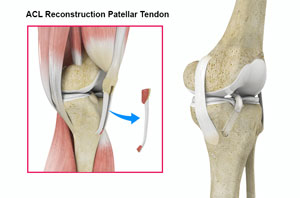
A tear of this ligament can make you feel as though your knees will not allow you to move or even hold you up. Anterior cruciate ligament reconstruction is surgery to reconstruct the torn ligament of your knee with a tissue graft.
Know More Launch Movie
Non-Surgical Knee Treatments
- Viscosupplementation

Viscosupplementation refers to the injection of a hyaluronan preparation into the joint. Hyaluronan is a natural substance present in the joint fluid that assists in lubrication. It allows the smooth movement of the cartilage-covered articulating surfaces of the joint.
Know More
Others
- Physical Examination of the Knee

A complete physical examination of the knee is performed when you present to your doctor with a knee complaint. Both of your knees are examined and the results of the injured knee are compared to those of the healthy knee.
Know More - Pre-op and Post-Op Knee Guidelines

Planning for your knee surgery prepares you for the operation and helps to ensure a smooth surgery and easier recovery. Here are certain pre-operative and post-operative guidelines which will help you prepare for knee surgery.
Know More - After Knee Replacement

After knee replacement surgery, once the anesthesia wears off, you will start to experience pain, for which your doctor will prescribe medication. You may have to remain in the hospital for a few days depending on your progress and overall health.
Know More - Am I a Candidate for Knee Surgery?

Arthritis of the knee can cause pain and stiffness, making regular activities such as walking and bending difficult. As arthritis progresses, conservative treatments tend to lose their efficacy and more definitive treatment should be considered.
Know More

